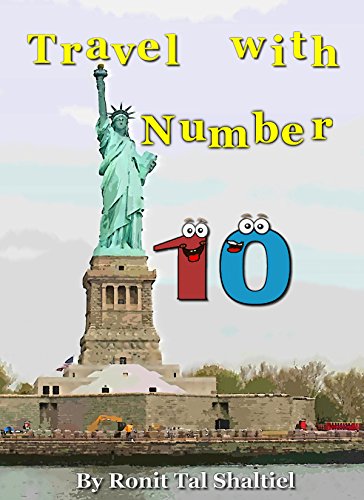Travel with Number 10 by Ronit Tal Shaltiel

Travel with Number 10 is a short book designed to encourage small children to get counting.
A blend of photos, artwork and typography, the story follows the Number 10 as he (she? they?) goes on tour around the US north-east, taking in New York, Boston, Pittsburg and Niagara.
Unfortunately, this lively little book is in desperate need of a proof reader. The problems begin with the is a list of previous publications. The grammar is substandard from the second sentence onward.
An example: “In book 1: “Where are the Numbers”, Number finds the rest of the numbers and having Math fun together”.
This really needs to be sorted out.
The story is straightforward: Number 10 (who is a character) visits a series of destinations, depicted through some quite nice photographs taken by the author. Here, on every page, he encounters a native, sometimes a cat, a dog, an otter or a human, and is asked to play.
He responds the same way every time:
“Number 10 joined them and they had math fun together. The (animal/person) asked” “Can we join you on the trip?” Number 10 answered: ” Thanks for the offer but this is your home. I will soon be back to mine”.
The prose is simple (which is good) and grindingly pedestrian (which is not good). Very young readers deserve imaginative language as well as a good standard of English.
I understand new readers love repetition. I almost drove my mother to hysterical desperation by demanding a re-reading of Squirrel Nutkin several times a day. But the repetitive section is actually a bit of a mouthful, and doesn’t lend itself to a lively call-and-response during reading-time. Something shorter and catchier would work better.
Little readers are also encouraged to have “math fun” through the graphics Tal Shaltiel has superimposed on the photographs. This is a good idea – the children can count donuts or dogs, and the total will always add up to ten.
But there are two key questions, when faced with a book designed educate little ones:
1) Will the book entertain them so they stay engaged and
2) Will they learn anything from it?
The lively photographs might well entertain, but the heavy-handed repetition in the story probably won’t. The repeated use of the same graphics is also off-putting. The different donuts (all different colours) work far better than the identical dogs.
And though youngsters should be encouraged to grapple with maths in a fun way, it isn’t a great idea to do so through flawed English.
A bit tweaking – after all, there are only a few hundred words in this book – would make all the difference. But as it stands, frankly, I wouldn’t buy this for a friend’s child because good English is as important as good maths.
4/20. Two stars.